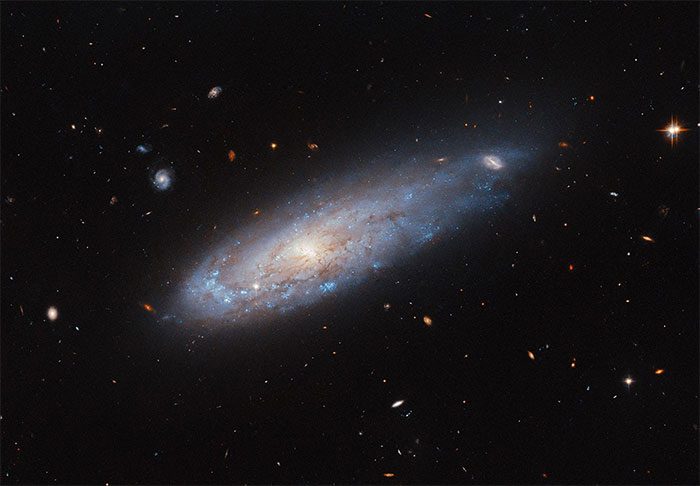NASA has just released a unique image of IC 3225, a colossal object exhibiting unusual behavior located 100 million light-years away from Earth.
According to NASA, IC 3225 is one of over 1,300 members of the Virgo Cluster. It is a spiral galaxy—similar to the Milky Way where Earth resides—but it behaves like a comet.
The data recorded by the Hubble Space Telescope, developed and co-operated by NASA and the European Space Agency (ESA), shows that it resembles a bullet shot from a cannon, racing through space.
The speed at which IC 3225 is hurtling through space is so immense that its shape becomes distorted, transforming into a droplet form with a comet-like tail trailing behind.

Galaxy IC 3225 racing through the lens of the Hubble telescope – (Photo: NASA).
NASA explains that the density of galaxies in the Virgo Cluster creates a rich hot gas environment between them, referred to as the “intra-cluster medium”. Meanwhile, the immense mass of the cluster causes the Virgo galaxies to orbit its center at very high speeds.
As they plunge through the thick intra-cluster medium, especially near the center of the cluster, they experience “ram pressure” that significantly affects the moving galaxies, stripping gas away from them as they travel.
When a galaxy moves through space, the gas and dust that comprise the intra-cluster environment create resistance against the galaxy’s motion, exerting pressure on the galaxy.
This pressure—known as ram pressure—can strip away the star-forming gas and dust from the galaxy, reducing or even halting the formation of new stars.
Conversely, this pressure can also compress other parts of the galaxy, potentially enhancing star formation.
IC 3225 is currently not too close to the cluster core and may have undergone ram pressure stripping in the past.
It appears to be compressed on one side, with more pronounced star formation, while the opposite side is stretched out, leading astronomers to suspect that it may have recently encountered another galaxy.
This interaction has increased the level of distortion and may also explain why IC 3225 is racing so intensely.
“The spectacle of a distorted galaxy serves as a reminder of the incredible forces at play on an astronomical scale, capable of moving and reshaping entire galaxies,” NASA concluded.





















































